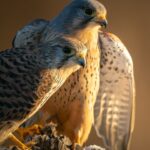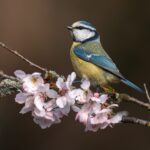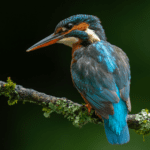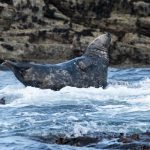
Photographing Gannets at Bempton Cliffs: A Graceful Return
Witnessing the graceful return of gannets to the UK shores is a breath-taking reminder of nature’s cyclical beauty. Their soaring flights and elegant dives speak of resilience and renewal, echoing the rhythm of the seasons.
There’s something magical about standing on the towering cliffs at Bempton, camera in hand, as thousands of gannets glide effortlessly through the air. As a wildlife photographer with a passion for conservation, moments like these make every early morning start and cold sea breeze worthwhile. The RSPB Bempton Cliffs Nature Reserve, perched on the rugged Yorkshire coast, offers one of the best opportunities in the UK to witness these remarkable birds in their natural habitat.
The first time I visited Bempton Cliffs, the scale of it all took my breath away. As I stood on the edge of the cliffs, 400 feet above the crashing North Sea, the sky seemed alive with movement. Gannets, with their striking white plumage, black wingtips, and unmistakable yellow heads, flew in every direction—some hovering in the updrafts, others diving with astonishing precision into the waters below. It’s a scene that stays with you long after the camera is packed away.
Gannets are the largest seabirds in the North Atlantic, and Bempton Cliffs is home to the UK’s only mainland gannet colony. From April to October, these magnificent birds return to the cliffs in their thousands, reclaiming the same nesting spots year after year. Photographing gannets is a lesson in patience and timing, as their movements are swift and unpredictable, yet their grace and agility make every shot a rewarding challenge. Whether capturing their mid-air courtship displays or the moment they plunge into the sea, the opportunities for stunning wildlife photography are endless.
One of the best aspects of Bempton Cliffs is its accessibility for photographers and wildlife enthusiasts alike. The RSPB has thoughtfully designed the reserve, providing several viewing platforms that offer fantastic vantage points without disturbing the birds. The reserve is also a haven for other seabirds like puffins, kittiwakes, and razorbills, making it a must-visit destination for any birdwatcher or photographer keen on capturing a variety of species.
But it’s the gannets that steal the show. Their synchronised flights, often in pairs or small groups, are mesmerising to watch. They travel vast distances across the ocean to feed, only to return to the very same cliff ledges to raise their chicks. As a photographer, I’ve always been captivated by the story these images tell—one of survival, endurance, and the natural cycle of life that plays out against the backdrop of the rugged Yorkshire coast.
Of course, capturing these birds at their best requires a few key techniques. A fast shutter speed is essential to freeze the action of their dives or mid-air battles for fish. I also recommend a telephoto lens to get up close and personal without disturbing their behaviour. But even with the perfect kit, it’s important to take a step back and simply appreciate the spectacle unfolding before you.
The gannets’ return to the UK is more than just a seasonal migration; it’s a celebration of nature’s resilience and the enduring beauty of our coastal ecosystems. For wildlife photographers and nature lovers, Bempton Cliffs is an unforgettable experience, and one I’ll return to time and time again.



Comments are closed.
You may also like
Puffins of the Isle of Lunga: The Charismatic ‘Sea Parrots’
The Grey Seals of St.Ives, Cornwall
Photographing Brown Bears in Finland: An Unforgettable Wildlife Adventure
Featured Posts

GET SOCIAL
INSTAGRAM
@paulbrowning.photography
@snowboard.paul
@macro.paul
TWITTER
@paul__browning_
FACEBOOK
@PaulBrowningPhotography
@snowboardpaul
@macro.paul.surrey
Get in Touch
GET SOCIAL
INSTAGRAM
@paulbrowning.photography
@snowboard.paul
@macro.paul
TWITTER
@paul__browning_
FACEBOOK
@PaulBrowningPhotography
@snowboardpaul
@macro.paul.surrey











